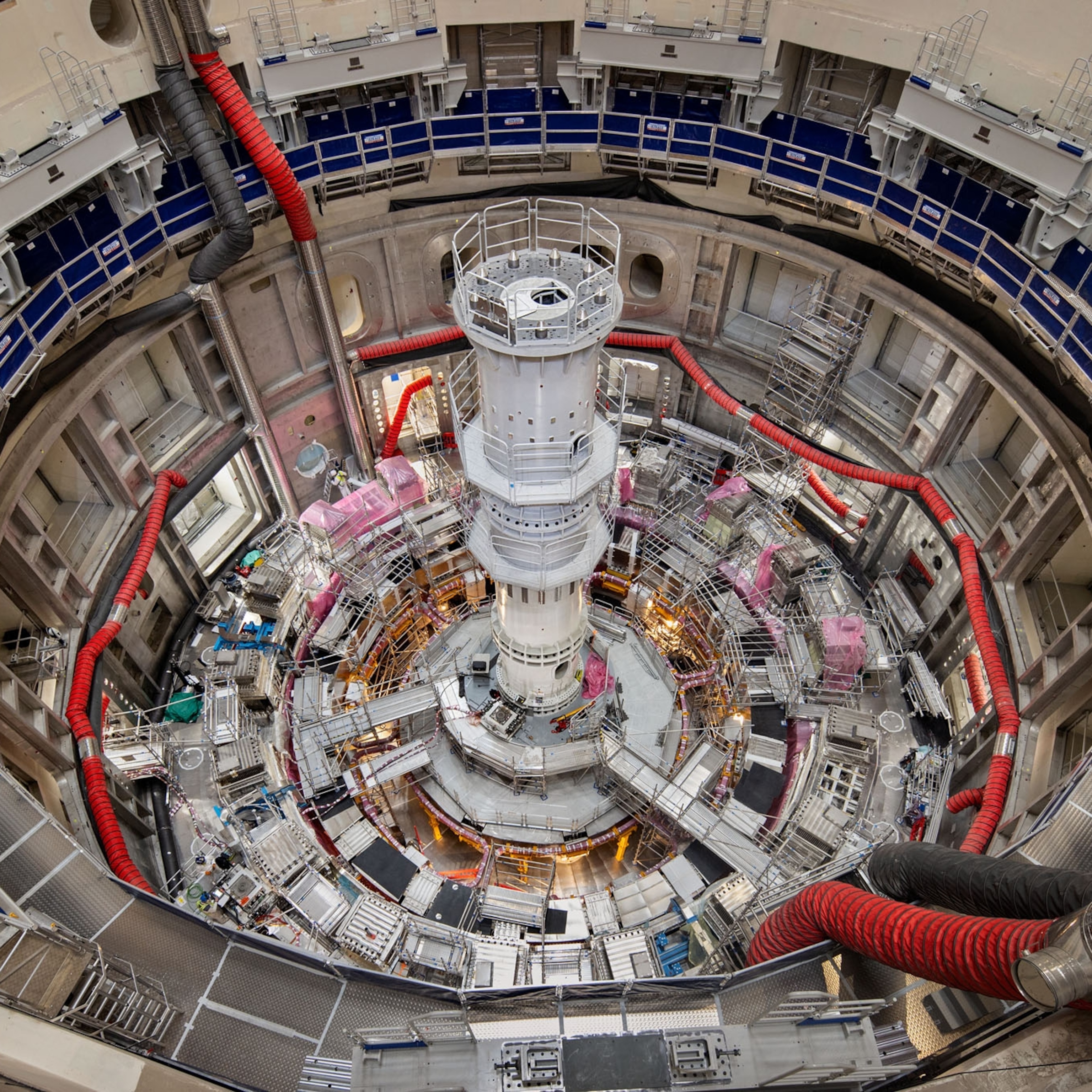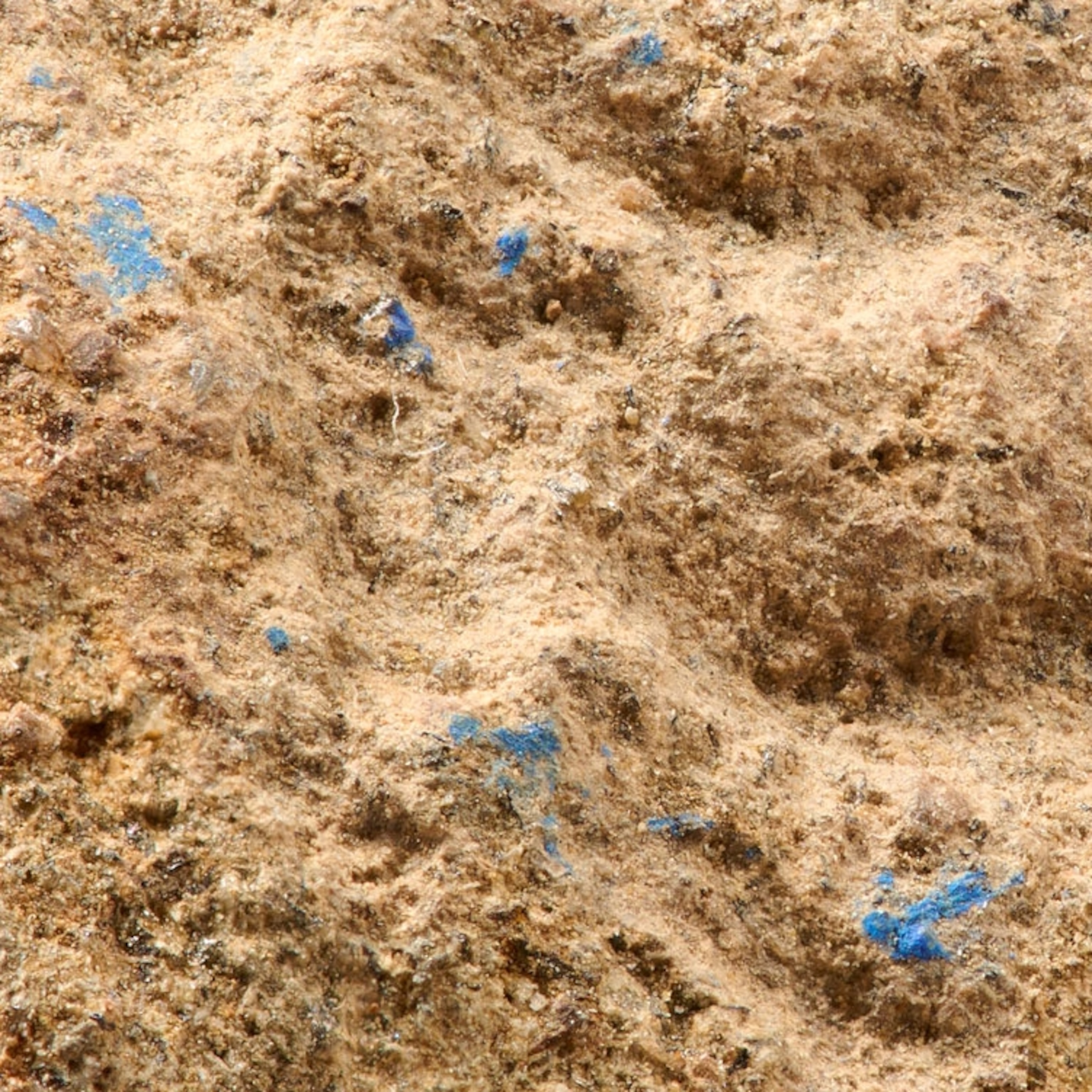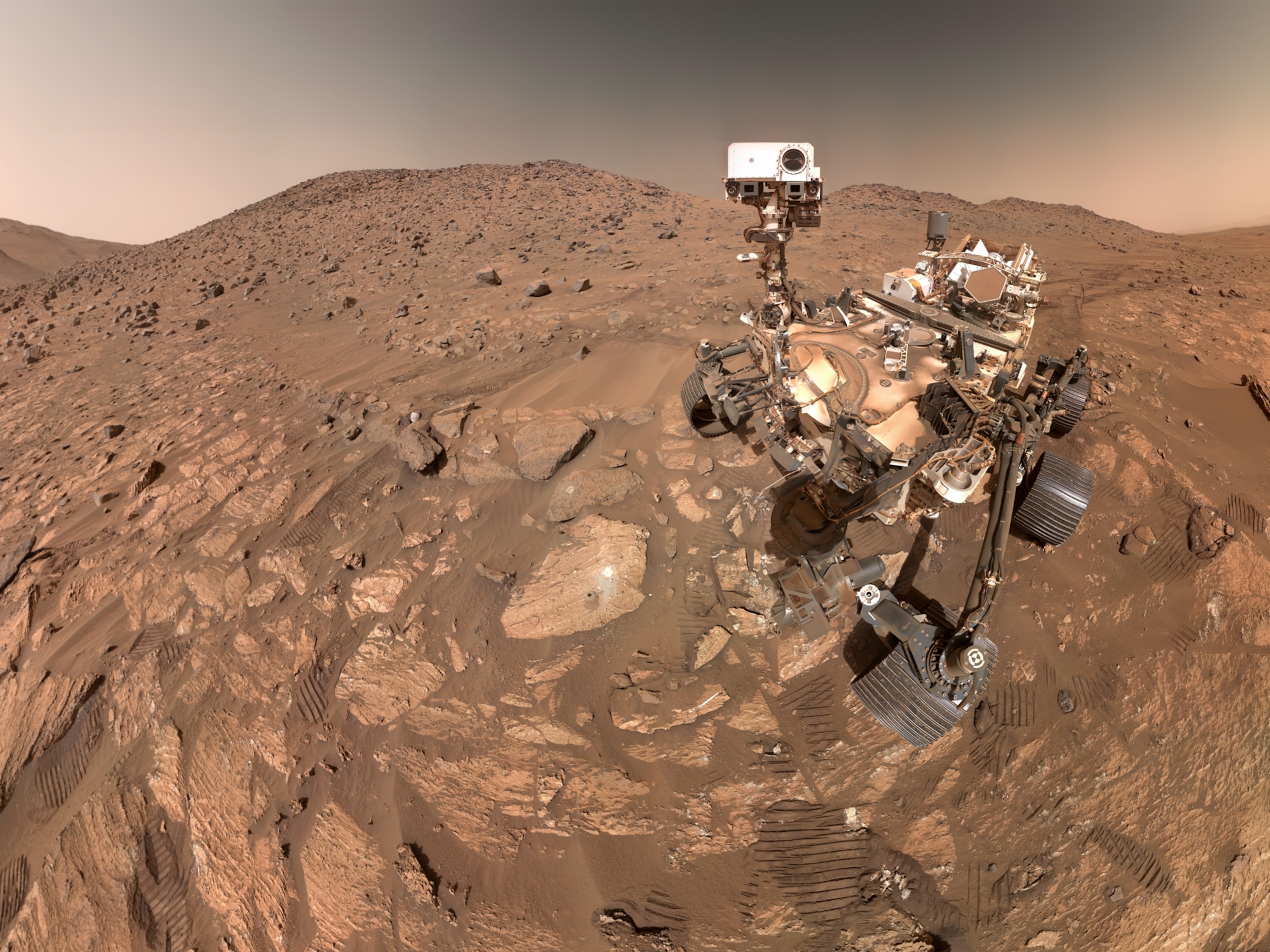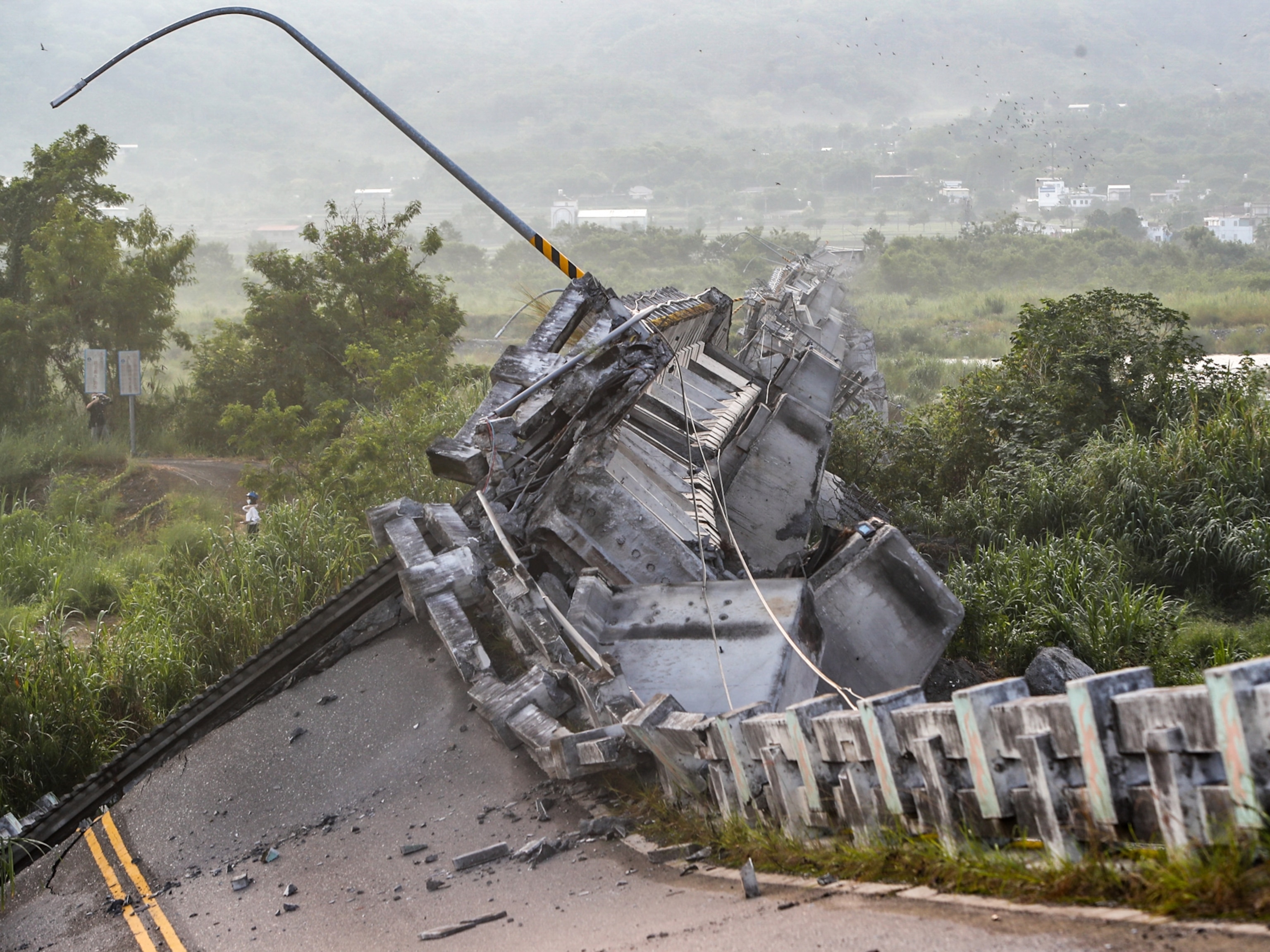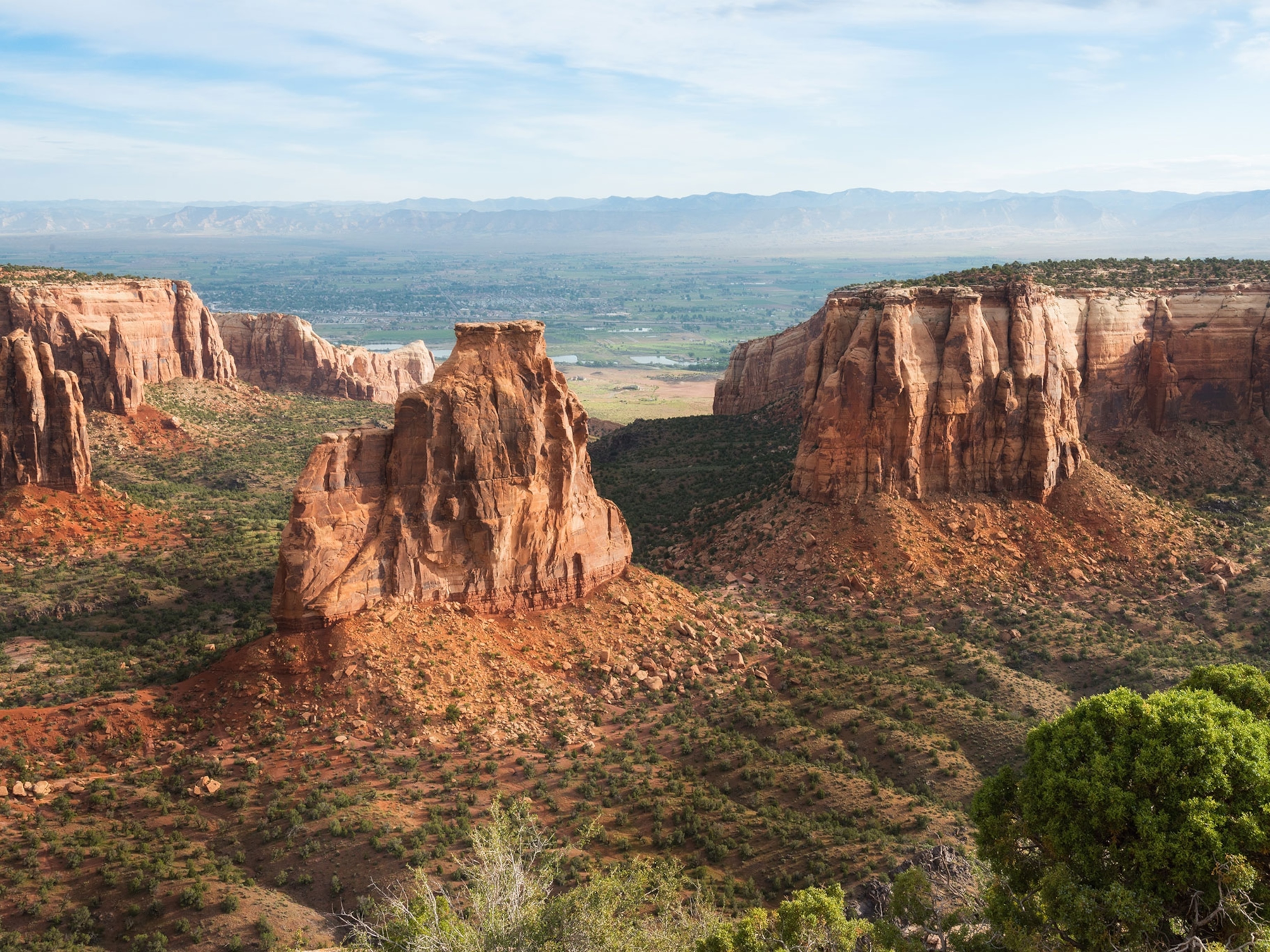
Solar storms can be even worse if you live near certain rocks
New USGS data show how cities have higher or lower risks of blackouts during a powerful sun storm depending on their regional geology.
Our sun is a restless star. When it’s particularly active, it can eject effervescent packages of magnetic energy and charged particles known as solar flares. If it releases a minor flare aimed at Earth, the solar material can produce harmless but spectacular displays of auroras when it slams into our atmosphere.
However, more powerful solar outbursts can give birth to geomagnetic storms that wreak havoc in Earth’s magnetic bubble, potentially delivering serious damage to the planet’s electrical infrastructure. (See pictures of solar storms being made in the lab.)
And, as it turns out, your city’s ability to weather a powerful geomagnetic storm may depend on the types of rocks below your feet.
Recent research by the U.S. Geological Survey analyzed how different flavors of rocks interact with geomagnetic storms in the northeastern U.S. The work shows that the potential damage to electrical networks can either be significantly amplified or dampened based on the regional rock types. People living in the New England Highlands, for example, have a higher risk of experiencing major damage during a geomagnetic storm, the study shows, while those in the Mid-Atlantic Coastal Plain have a far lower risk.
Scientists have known for a while that geology plays a key role in solar storm damage. But Love’s study, published in December in the journal Space Weather, goes a step further by precisely quantifying how geological differences control the damage potential in specific locations in the U.S. northeast. And although this study only focused on one part of one country, it has global implications.
Right now there is a dearth of detailed data on regional geomagnetic risks, as well as on the frequency and intensity of solar storms and our technology’s response to them. This means that space weather risk assessments are several decades behind the threat analyses for hazards such as hurricanes and earthquakes, which makes mitigation planning “extremely challenging,” says Edward Oughton, a senior research associate at the University of Oxford’s Environmental Change Institute. Undertaking more detailed regional mapping of geoelectric risks will help fill in the gaps, and Australian and Chinese initiatives to this effect are already underway.
“In the grand scheme of things, doing these surveys and collecting the geomagnetic data is not very expensive,” says study leader Jeffrey Love, a geophysicist within the USGS’ Geomagnetism Program. “But it takes initiative to do it.”
Interplanetary electric boogaloo
Powerful solar storms are not to be taken lightly. When the sun launches a strong flare toward Earth, the electromagnetic energy hits the planet at the speed of light. This excites particles in the upper atmosphere, causing disruptions to radio signals. If a flare is strong enough, radio communication used by airlines and satellite-based navigation networks will malfunction or stop working altogether.
Around 30 minutes later, a huge flood of electrons and protons moving close to the speed of light arrives. This onslaught damages electronic circuits on satellites, and any astronauts outside of Earth’s magnetic bubble could get a potentially life-threatening dose of radiation.

Then, 18 hours to several days after the start of the event, a colossal plasma cloud known as a coronal mass ejection may crash into Earth’s magnetic bubble at 1,900 miles a second. These processes are capable of creating major disturbances in our planet’s magnetic field, which are known as geomagnetic storms.
If they are powerful enough, such storms can induce strong electric currents in very long conducting structures in power grids, which causes serious and sometimes permanent damage to them. This can trigger widespread blackouts; a 1989 geomagnetic storm led to lights going out all over Quebec. During the Vietnam War, extreme space weather appeared to cause sea mines offshore from Vietnam to explode.
One of the strongest largest geomagnetic storms on record, the 1859 Carrington Event, disrupted telegraph systems, and its operators got electric shocks. The storm sparked auroras as far south as Hawaii, and people found that they could read newspapers outside even at night. If a similar event happened today, it would very likely cause widespread and extremely costly devastation to our increasingly electrified infrastructure.
Supercharging a solar storm
On a regional scale, the underlying geological makeup can have a hugely significant influence on a storm’s damage potential. Sedimentary rocks tend to have pore space that contains water, which makes them electrically conductive, says Ciaran Beggan, a geophysicist with the British Geological Survey. Metamorphic and igneous rocks are denser and less porous and so are more electrically resistive.
But during a geomagnetic storm, errant magnetic activity induces electrical currents at the planet’s surface that can mean trouble for a city built on top of metamorphic or igneous rock. Although the current can’t easily flow through these rocks, “if you’ve short-circuited the insulating part of the earth with a power grid, it flows right through it,” causing damage, Love says.
This means when the next major geomagnetic storm strikes, “one power grid in one part of Europe might be perfectly fine, but another just a few hundred kilometers away might be seriously impacted by the same event,” says Juha-Pekka Luntama, head of the space weather for the European Space Agency's Space Situational Awareness Programme.
When the next major geomagnetic storm strikes, “one power grid in one part of Europe might be perfectly fine, but another just a few hundred kilometers away might be seriously impacted by the same event.”Juha-Pekka Luntama, ESA
This effect applies to regions all over the world. The north of Scotland, for example, has plenty of resistive rocks, which means its power grids are at risk of experiencing dangerously strong geoelectric fields, Beggan says. Conversely, the south of England is generally packed with low-risk sedimentary rocks.
The coast complicates matters. Along shorelines you have both resistive sand and conductive seawater. That can create a “channeling effect, whereby the current builds up along the coastline,” Beggan says. That’s bad news for any power grids running along the shore.
For their latest work, Love’s team obtained records of magnetic storms detected at observatories, then combined them with new surveys that measured the local magnetic field and its related electrical field. By doing so, they could calculate the electrical surges that accompanied past geomagnetic storms, which can be used to model future events of similar strength.
The team found that risk varies considerably from region to region, with some electrically resistive rocks boosting the regional geoelectric hazard by a factor of a hundred. The huge quantities of igneous and metamorphic rocks in the Appalachian Mountains mean that the power grids sitting atop them will suffer greatly the next time the sun gets its rage on.
The way the power grid is oriented plays a role, too, Love says. Electric lines running perpendicular to the Appalachians increase the damage potential more than a grid running parallel to them.
Staring down the sun
We also need to know how often powerful geomagnetic storms take place. Unfortunately, modern instrumentation has been documenting them for only about 70 years, which means our record is patchy at best. (Find out how scientists monitoring solar activity likely prevented Cold War hostilities from breaking out in 1967.)
That’s why some scientists have been trying to dig up older data. In a PNAS study published earlier this month, a team led by Raimund Muscheler of Lund University examined chemical fingerprints in tree rings and ice cores and found evidence for a solar storm that hit Earth around 660 B.C. This tempest was 10 times stronger than a known strong solar storm that struck in 1956.
The data, however, remains very noisy, so finding real solar storms buried within it is a tricky task, Muscheler says: “I think currently we miss everything between the very big events [like the one in 660 B.C.] and 1956-size events,” he says.

At the same time, the European Space Agency is among several groups working on ways to see future storms brewing in time to mitigate their effects.
If funding is secured in late November, ESA’s Lagrange mission will settle down near the sun, keeping an eye out and warning Earth of any incoming paroxysms. That way, just before Earth and the sun renew their dangerous alliance, power companies could open up as many circuits as possible to spread out the excess electricity throughout the system.

